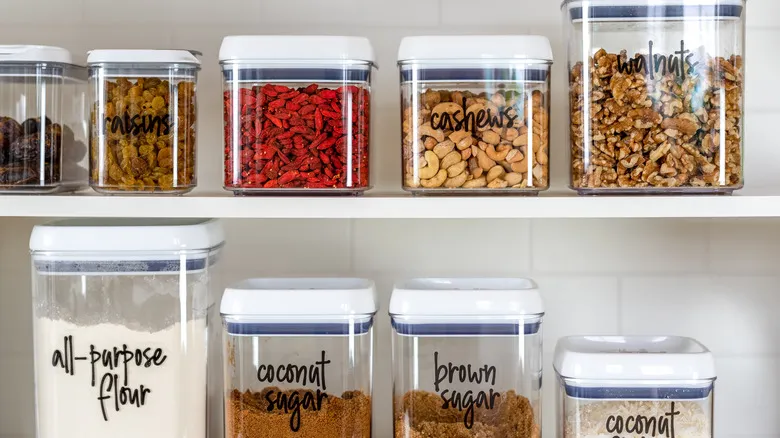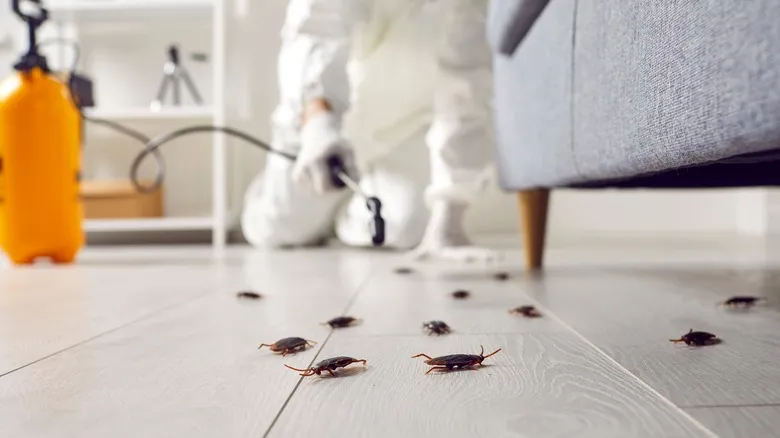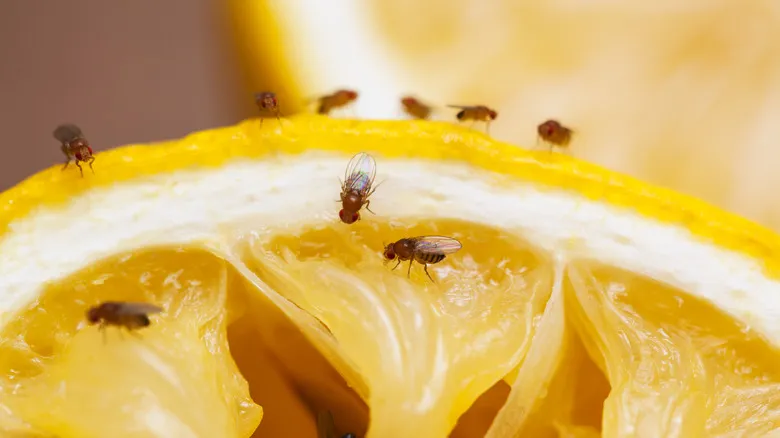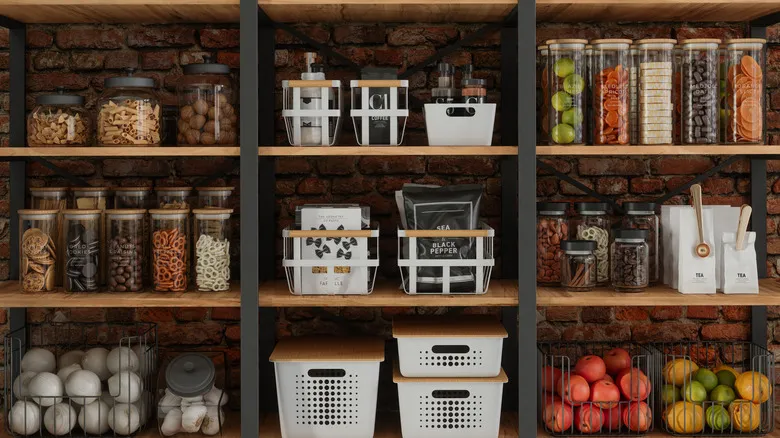Familiarize yourself with the players and their MOs

In general, the most prevalent pantry pests consist of various beetle species, Indian meal moths, ants, cockroaches, rodents, and fruit flies. They often target items such as flours, dry cereals, spices, candies, fruits, and chocolate. Fredericks notes that beetles have a particular fondness for cake mixes, macaroni, cookies, and chocolate, while Indian meal moths are drawn to dried fruits, grains, seeds, nuts, birdseed, dog food, dried red peppers, and candy. Ants, he explains, are especially attracted to spills or crumbs, particularly if they are sweet.
As their name implies, fruit flies are drawn to fruit, especially those that are fermenting or have already fermented (like wine). "They can sense the yeast produced by fermenting fruit from considerable distances. Once they locate a target, their small size allows them to slip into homes through tiny cracks and crevices, and most window screens are ineffective at keeping them out."
All critters may gross you out, but only some will actually make you sick

Dr. Fredericks assures you that you need not worry about falling ill from beetles or Indian meal moths; however, cockroaches and rodents pose significant health risks as they can transmit harmful diseases and contaminate food. "Cockroaches are capable of spreading 33 different types of bacteria, including E. coli and salmonella. Additionally, they are known to provoke allergic reactions and can trigger asthma attacks, particularly in children." In contrast, rodents heighten the risk of house fires by gnawing on electrical wires and insulation, and they also bring fleas and mites into the home.
Beware the rapid multipliers

While no pest infestation is truly "easy" to manage, those pests that reproduce rapidly can pose an even greater challenge and certainly necessitate prompt intervention from a licensed expert. As Dr. Fredericks points out, "A mouse issue should be addressed by a professional, as mice can produce up to 12 offspring every three weeks. This indicates that if you see one mouse darting across the kitchen floor, there are likely more nearby." He also highlights ants and fruit flies for their propensity to appear in large swarms. Female moths can lay as many as 200 eggs in or around a food source within just a week, while fruit flies can deposit an astonishing average of 500 eggs on the surface of rotting fruit. Now that's what I call an unwanted baby boom, right?
Keep a lid on It

One of Dr. Fredericks' best recommendations for preventing a pantry pest invasion is to equip your kitchen with appropriate storage solutions. "Consider investing in Tupperware-style containers with secure lids. Plastic or glass options are effective, provided they have a snug-fitting lid."
For a budget-friendly alternative, take a cue from professional chefs: stock up on a few sleeves of quart and pint-sized deli containers to have readily available. While they may not be the most aesthetically pleasing storage option for your kitchen, they are highly functional.
Give your groceries a good once-over

(Not-so) fun fact: According to Dr. Fredericks, "the majority of pantry pests enter the home through items that are already infested, like food in paper grocery bags, cardboard, or plastic bags." He advises carefully examining all your intended purchases before placing them in your shopping cart and, of course, discarding any items that appear even slightly damaged. It's not worth the risk of bringing fruit flies into your kitchen.
Mind the fresh fruit display

Displaying a bowl of fresh fruit on the counter can enhance the aesthetic, but if you choose to do so, be sure to regularly inspect the fruit for any signs of overripening or spoilage. (Don’t forget how rapidly fruit flies can multiply!) If you anticipate not having the time to monitor them closely, consider using artificial fruit or fresh flowers as more practical alternatives to bring seasonal charm to your kitchen.
Rotate a good scrub-a-dub-dub into your cleaning routine

Maintaining proper sanitation—such as promptly cleaning up spills and crumbs and regularly disposing of trash—is essential for keeping pests away; this is obvious. However, Dr. Fredericks also suggests that you should occasionally clear out your cupboards and thoroughly clean them with soap and water. Additionally, address any sources of moisture and seal any gaps. "Inspect for cracks or openings where pests could enter your home, particularly around stovepipes and water pipes."
Recommended

How To Add A Unique Breakfast Twist To Spanakopita

Reach For One Pantry Staple For Creamier And Faster Polenta

These Classic Retro Cookbooks Are Still Indispensable

The Easy Way To Find Hot Spots In Your Oven Without Wasting Bread
Next up

